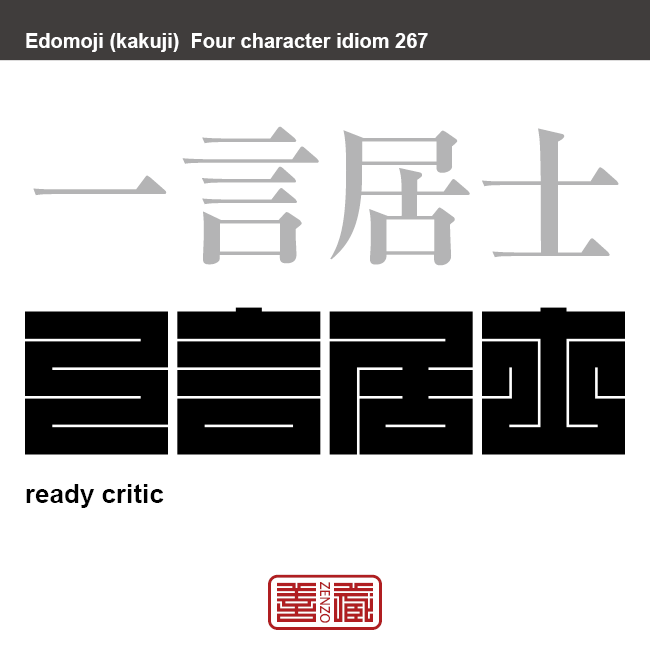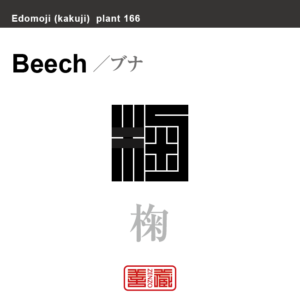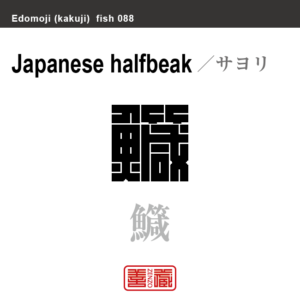一言居士 いちげんこじ 角字でことわざ、四字熟語

一言居士
いちげんこじ
Ichigen-koji
Ready critic
Unicode: [一_0x4E00][言_0x8A00][居_0x5C45][士_0x58EB]
何にでも自分の意見を一つ言ってみなくては気のすまない人。ひとことでも言わなければすまない性格の人。口を出さずにいられない人。何かあるたびに、いちいち口をはさんでくる、厄介な人。
「居士」は仏教用語。元は資産家の家長という意味で、在家で修行する人のこと。転じて、ろくに修行も修めていないのに、悟りきったようなことを、得意げに言う人を表し、親しみや軽いさげすみの意味で「○○居士」と呼ぶ。
角字とは?
江戸時代に誕生した角字は、正方形のグリッド内にほぼ水平・垂直のラインのみで文字(漢字)が表現されるグラフィックアートです。
正方形という限られた空間の中に、あらゆる文字を閉じ込めようとするグラフィックデザインは、前述した、ミニマムな物に対する日本人特有のこだわりが随所に感じられます。
そのシンプルで有りながら、奥深い「角字」は多くの日本人を魅了し、お祭りで着る半被や印半纏(しるしばんてん)と言われる着物や、商標、印鑑、家紋、看板デザインなどに今日まで数多く使用されてきました。
What is Kakuji?
There is a style of penmanship called “Kakuji” in Japan. Edo-born Kakuji is a graphicart that expresses letters (kanji) with almost horizontal and vertical lines only.
The design which bases on many straight lines seems simple, or too plain even at its first glance; yet this beautiful artistic penmanship that encompasses the aesthetic of the Japanese in the Edo era, also known as “Iki”, and playfulness has long been inherited to this day, thanks to the masteries’ long years of efforts in training and refinement.
Kakuji with its simplicity and depth is used for designs such as trademark, hanko stamp, family crest and signboard.































































 2文字コード:MZ 3文字コード:MOZ 数字:508 ITU:258 ccTLD:.mz
2文字コード:MZ 3文字コード:MOZ 数字:508 ITU:258 ccTLD:.mz







































































































































